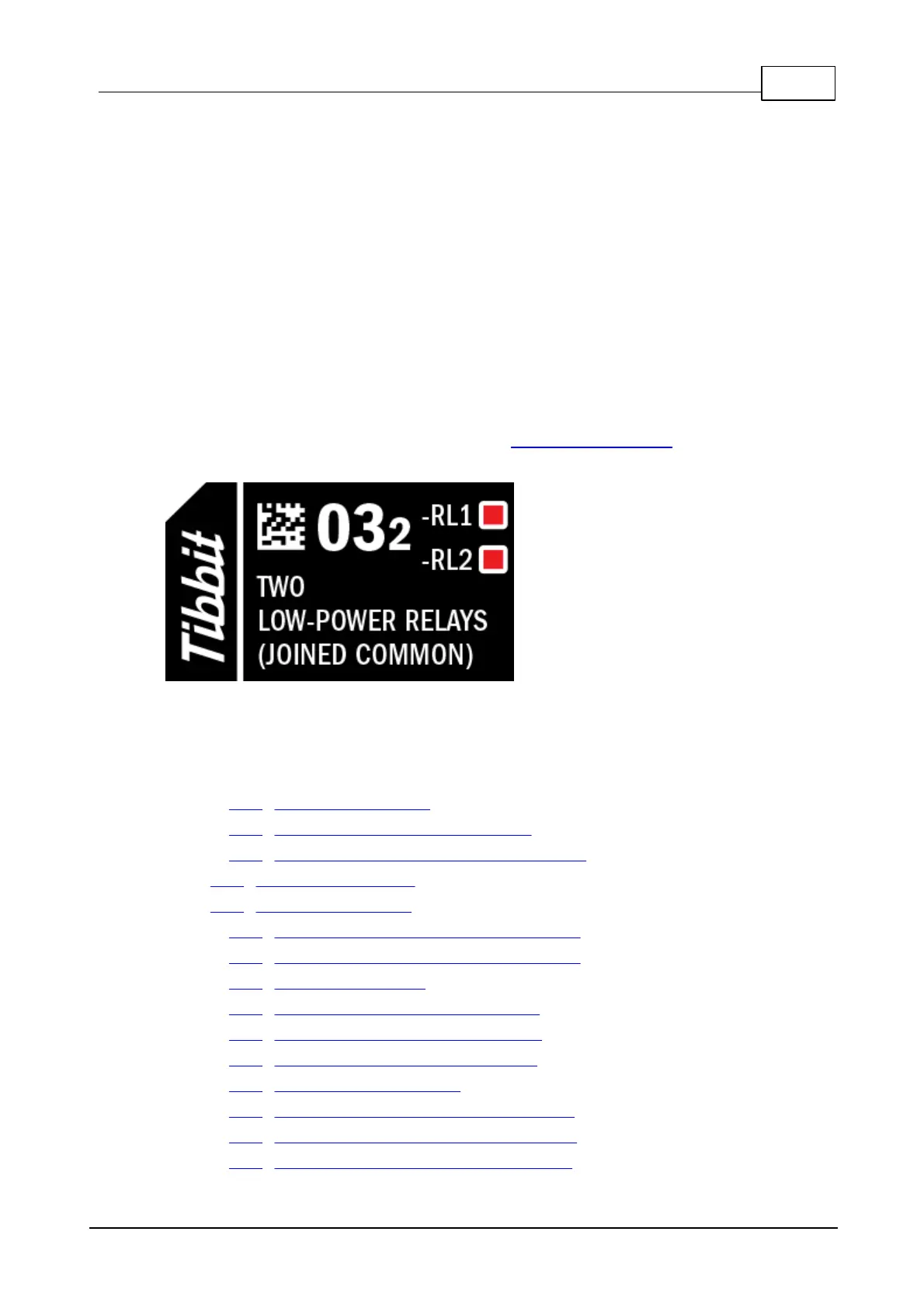280Tibbo Project System (TPS)
© Tibbo Technology Inc.
LEDs connected to the control lines are usually wired to light up when the control
line state is LOW. On the contrary, "power good" LEDs indicate the presence of
voltage on power lines (a "HIGH" state of sorts).
LEDs of Tibbit devices are usually buffered. That is, they do not impose any
significant load on the lines they are connected to.
There are no LEDs on "C" Tibbits.
Labeling
Each Tibbit device has a label which states this Tibbit's number and function.
A small 2D barcode (micro QR type) encodes the Tibbit number as well. This number
is a 4-digit code. First three digits in the code represent Tibbit number, and the
fourth digit indicates the device version (some Tibbits have more than one version
available).
For example, if the code is 0032 then this is Tibbit #03, version 2:
Available Tibbits
#00-1, M1S: Four Direct I/O lines
#00-2, M1S: Three direct I/O lines and ground
#00-3, M1S: Two direct I/O lines, +5V power, ground
#01, M1S: Four-line RS232 port [SER, INT]
#02, M2S: RS232/422/485 port [SER, INT]
#03-1, M1S: Two low-power relays (configuration 1)
#03-2, M1S: Two low-power relays (configuration 2)
#04-1, M1S: Two isolated inputs
#04-2, M1S: Three isolated inputs, common (-)
#04-3, M1S: Three isolated inputs, common (+)
#04-4, M1S: Four opto-inputs, common ground
#04-5, M1S: Two 24V isolated inputs
#04-6, M1S: Three 24V isolated inputs, common (-)
#04-7, M1S: Three 24V isolated inputs, common (+)
#04-8, M1S: Four 24V opto-inputs, common ground
